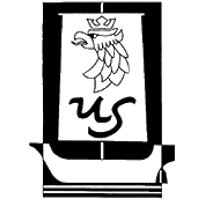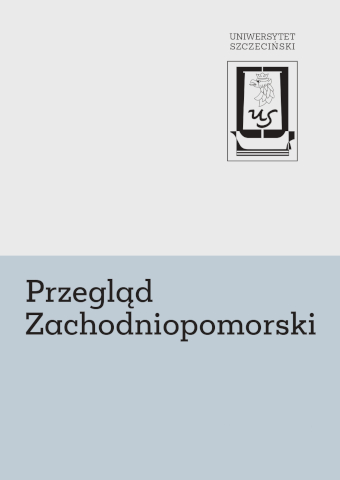







| Authors: |
Marcin
Bogusz

Instytut Historii Sztuki Uniwersytet Kardynała Stefana Wyszyńskiego w Warszawie |
| Keywords: | panel painting iconography Woensam wood engraving Kołobrzeg wise woman |
| Data publikacji całości: | 2021 |
| Page range: | 23 (7-29) |
| 1. | Bernoulli, Jean. Reisen durch Brandenburg, Pommern, Preuβen, Curland, Ruβland und Pohlen, in den Jahren 1777 und 1778, T. 2: Rückseite von Danzig über Stettin nach Berlin im Jahr 1777, und zweyte Reise nach Danzig im Jahr 1778. Leipzig: Caspar Fritsch, 1777. |
| 2. | Bӧttger, Ludwig. Die Bau- und Kunstdenkmӓler des Regirungs- Bezirk Kӧslin, T. 1, H. 1: Die Kreise Kӧslin, und Kolberg-Kӧrlin. Stettin: Druck von F. Hessenland, 1889. |
| 3. | Calmann, Gerta. „The Picture of Nobody. An Iconographical Study”, Journal of the Warburg and Corutauld Institutes, Jan.–Jun. (1966): 60–104. |
| 4. | Domasłowski, Jerzy. „Gotyckie malarstwo tablicowe Pomorza Zachodniego i ziemi lubuskiej”, Materiały Zachodniopomorskie 41 (1995): 341–376. |
| 5. | Dziemba, Robert. Historia kołobrzeskiej bazyliki konkatedralnej. Kalendarium. Kołobrzeg: Wydawnictwo „SARA“ S.C. Ż. Kornas, K. Łuszczyński, 2000. |
| 6. | Dziemiok, Bohdan. O komizmie. Od Arystotelesa do dzisiaj. Antologię opracowała Monika Bokiniec. Gdańsk: słowo/obraz terytoria, 2013. |
| 7. | Foucault, Michel. Historia seksualności, tom 4: wyzwania ciała, opr. Frédéric Gros, przeł. Tomasz Stróżyński. Gdańsk: słowo/obraz terytoria, 2019. |
| 8. | Giza, Natalia. Ideał kobiety angielskiego renesansu w świetle XVI-wiecznej literatury parenetycznej. Kraków: Wydawnictwo naukowe Uniwersytetu Pedagogicznego, 2020. |
| 9. | Graffunder, Paul. „Niderdeutsche Inschriften des Kolberger Domes“. Jahrbuch des Vereins für Niederdeutsche Sprach-Forschunng 23 (1897): 51–53. |
| 10. | Grӧssinger, Christa. Humour and Folly in Secular and Profane Prints of Northern Europe. 1430–1540. London, Turnhout: Brepols, 2002. |
| 11. | Hinz, Paul. Der Kolberger Dom und seine Bildwerke. Eine Wanderung durch sechs Jahrhunderte christlicher Kunst in einer pommerschen Kirche. Stettin: Verlag Fischer & Schmidt, 1936. |
| 12. | Hirsching, Friedrich Karl Gottlob. Nachrichten von sechenwürdigen Gemӓlde- und Kupferstichsammlungen, Münz- Gemmen- Kunst und Naturalienkabineten, Sammlungen von Modellen, Maschinen, physikalischen und matematischen Instrumenten, anatomischen Prӓparaten und botanischen Gӓrten in Teutschland nach alphabetischer Ordnung der Stӓdte. Erlangen: Johann Jakob Palm, 1786. |
| 13. | Kolb, Karin. Kunst- und Kulturhistorische Studien zur Zehn-Gebote-Tafel von Lucas Cranach d. Ä. und seiner Werkstatt. Nachtrag zum Bestimmungsort und zur Geschichte der Tafel. Dostęp: 14.04.2021. https://lucascranach.org/documents/DE_LHW_G25_FR077/09_Other/DE_LHW_G25_FR077_2001_Document_Kolb_001-055.pdf. |
| 14. | Kugler, Franz. „Pommersche Kunstgeschichte. Nach der erhaltenen Monumenten dargestellt“, Baltische Studien 8 (1840), 1. |
| 15. | Labuda, Adam Stanisław. Malarstwo tablicowe w Gdańsku w 2 poł XV w. Warszawa: Państwowe Wydawnictwo Naukowe, 1979. |
| 16. | Maaβ, Johann Gottlieb Wilhelm. Geschichte und Bearbeitung der St. Marien-Dom-Kirche zu Colberg. Colberg: Gedruckt und zu haben bei C. J. Post, 1837. |
| 17. | Mensger, Ariane. red. Weibsbilder. Eros, Macht, Moral und Tod um 1500. Berlin, München: Deutscher Kunstverlag, 2017. |
| 18. | Mohrland, Julianne. Die Frau zwischen Narr und Tod. Untersuchungen zu einem Motiv der frühneuzeitlichen Bildpublizistik, Karlsrucher Schriften zur Kunstgeschichte, Bd. 8. Berlin: Lit Verlag Dr. W. Hopf, 2013. |
| 19. | Mӧller, Friedrich. Die Künstler aller Zeiten und Vӧlker oder Leben und Werke der berühmsten Baumeister, Bildhauer, Maler, Kupferstecher, Formschneider, Litographem etc. von den frühesten Kunstepochen bis zur Gegenwart, T. 1. Stuttgart: Verlag von Ebner & Seubert, 1857. |
| 20. | Nickel, Helmut. Five Shields from a Set of Seven, with the Family Arms of Behaim von Scharzbach. W: Gothic and Renaissance Art in Nuremberg 1300–1500. Catalog of an exhibition held at the Metropolitan Museum of Art, New York, April – June 22, 1986 and at the Germanisches Nationalmuseum, Nuremberg, July 24 – Sept. 28, 1986. New York-Munich: The Metropolitan Museum of Art-Prestel-Verlag, 1986. |
| 21. | Nodl, Thomas. Albrecht Altdorfer in sejner Zeit. Reliӧse und profane Themen in der Kunst um 1500, Kunstwissentlischaftliche Studien, Bd. 115. München, Berlin: Deutscher Kunstverlag, 2004. |
| 22. | Oczko, Piotr. Miotła i krzyż. Kultura sprzątania w dawnej Holandii, albo historia pewnej obsesji. Kraków: Collegium Columbinum, 2013. |
| 23. | Oleśkiewicz, Anastazja, Taylor-Kucia, Jessica red. Praca kobiety nigdy się nie kończy. Kraków: Międzynarodowe Centrum Kultury, 2013. |
| 24. | Płonka-Bałus, Katarzyna. Średniowieczne rękopisy iluminowane Biblioteki i Muzeum Książąt Czartoryskich w Krakowie, t. 2: Bawaria, Czechy – Polska. Kraków: Muzeum Narodowe w Krakowie, 2018. |
| 25. | Riemann, Heinrich. Geschichte der Stadt Colberg. Aus den Quellen dargestellt. Colberg: Carl Jancke’s Verlag 1873. |
| 26. | Schüppert, Helga. „Frauenbild und Frauentag in der Predigtliteratur”, W: Frau und Spätmittelalterlicher Alltag. Internationaler Kongress Krems an der Donau 2. Bis 5. October 1984, Verӧffentlichungen des Instituts für Mittelalterliche Realienkunde Österreichs, nr 9, 103–156, Wien: Verlag der Österreichischen Akademie der Wissenschaften, 1986. |
| 27. | Seebohm, Almuth. „The Crucified Monk”. Journal of the Warburg and Courtauld Institutes 59 (1996): 61–102. |
| 28. | Zajączkowski, Stanisław. „Studia nad procesami Polski i Litwy z Zakonem Krzyżackim w l. 1420–1423”, Ateneum Wileńskie 12 (1937): 282–403. |